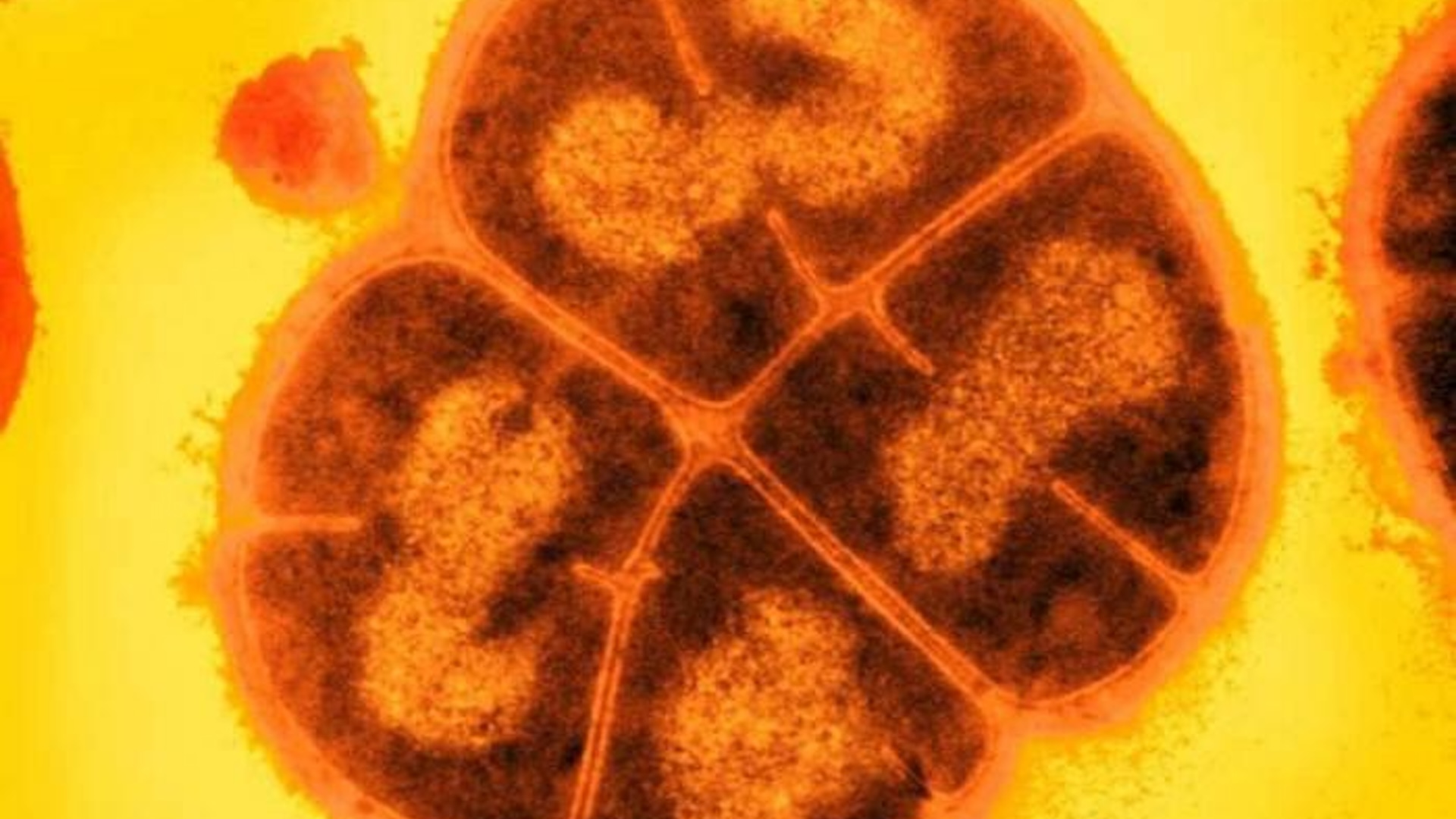
New insight into how unique bacteria resist damage from radiation could lead to better protection for humans — both on Earth and among the stars.
Deinococcus radiodurans is an extremophile, a bacterium that can withstand conditions that would kill off most life-forms. D. radiodurans‘ ability to resist radiation thousands of times stronger than the lethal dose for humans has earned the microbe the nickname “Conan the Bacterium.”
“Ionizing radiation — such as X-rays, gamma rays, solar protons and galactic cosmic radiation — is highly toxic to both bacteria and humans,” Michael Daly, a geneticist and D. radiodurans expert at Uniformed Services University in Maryland, told Live Science.
“In bacteria, radiation can cause DNA damage, protein oxidation and membrane disruption, leading to cell death,” he explained. “In humans, radiation exposure can result in acute radiation syndrome, increased cancer risk, and damage to tissues and organs.”
Related: Super space sunblock made from skin pigment could shield astronauts from radiation
Ionizing radiation removes electrons from atoms. This results in reactive molecules called free radicals, which are unstable, and in large enough numbers, can damage DNA, proteins and cells.
D. radiodurans‘ ability to resist this damage comes from a unique combination of factors: a protective cell wall, efficient repair mechanisms to fix radiation-induced DNA damage, and a collection of antioxidants that diffuse free radicals.
In a new study, published Dec. 12 in the journal PNAS, Daly and his colleagues took inspiration from a powerful antioxidant made by D. radiodurans to design their own version of the antioxidant.
Complexes inside the bacterium that contain manganese protect its proteins from radiation by removing the free radicals that can damage them. This leaves those proteins free to perform vital cellular functions, such as DNA repair. The researchers created a lab-made version of the complex by combining charged manganese particles, or ions, with a phosphate ion and a specially designed peptide, or short chain of amino acids. The peptide was based on the amino acids that are most common in D. radiodurans.
The researchers dubbed their new antioxidant manganese-dependent peptide (MDP).
“I started as a skeptic,” said study co-author Brian Hoffman, a professor of chemistry and molecular biosciences at Northwestern University. “I suspected that MDP’s efficacy was nothing more than the ‘sum of its parts.'”
However, Hoffman said he was surprised to discover that the parts interacted to form a more powerful whole. “This is the ‘secret sauce,'” he said.
Experiments that measured how strongly the parts of the complex bound together showed that manganese alone didn’t form strong enough bonds with the designed peptide to be protective. Adding the phosphate ion strengthened the bonds and produced a complex that could withstand over 12,000 times the human lethal dose of ionizing radiation.
Related: How radioactive is the human body?
Now, the researchers are using special techniques to examine the structure of MDP, in hopes of understanding how it’s put together, why it works so well, and how to make it even more effective. The results could have wide-reaching applications.
“Astronauts on deep-space missions are exposed to chronic high-level ionizing radiation, primarily from cosmic rays and solar protons,” Daly said. “MDP — a simple, cost-effective, nontoxic and highly effective radioprotector — could be administered orally to mitigate these space radiation risks.”
He added that, “for manned missions to Mars, which may extend over a year, radioprotection will be essential for the crew’s safety.”
Closer to home, Daly and Hoffman want to explore MDP’s potential for improving health on Earth.
“Acute radiation syndrome, which involves severe immunological complications, might be preventable with MDP,” Daly said. “There’s also a well-recognized link between radiation resistance and aging.” So perhaps MDP could be a potential treatment to combat metabolic aging.
However, more research is needed to develop safe, effective forms of MDP for use in humans. With time, though, Hoffman, Daly and their colleagues foresee MPD’s potential in everything from health care to space travel.
Ever wonder why some people build muscle more easily than others or why freckles come out in the sun? Send us your questions about how the human body works to community@livescience.com with the subject line “Health Desk Q,” and you may see your question answered on the website!
